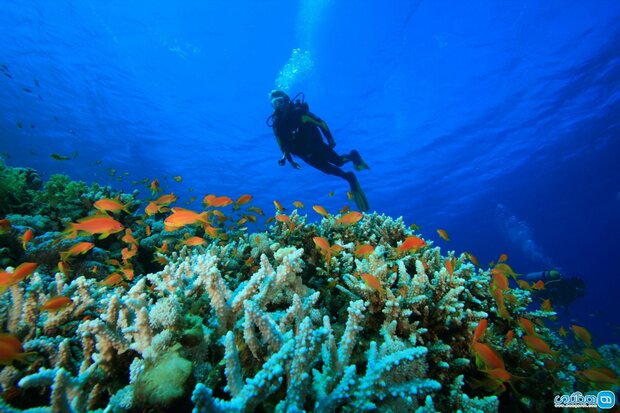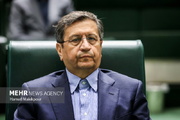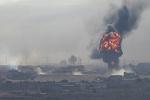Sea temperature rise, sea level rise and ocean acidification, all associated with greenhouse gas emissions are the main threats to the corals reefs.
In particular, runoff, pollution, overfishing, blast fishing, disease, invasive species, overuse by humans and coral mining and the digging of canals and access into islands and bays are localized threats to coral ecosystems.
Other threats include the ocean's role as a carbon dioxide sink, atmospheric changes, ultraviolet light, ocean acidification, viruses, impacts of dust storms carrying agents to far-flung reefs, and algal blooms.
Oceanologist believe that the phenomenon is mainly due to climate change, and hence temperature rise in the Persian Gulf.
Reportedly corals in Shidvar Island, in southern province of Hormozgan, are totally gone and breakwater at Lark Island, in Hormozgan province likewise, letting sediments entering the sea, are choking the corals.
Oceanologist, Hamid Rezaei, has explained that temperature rise resulted from climate change is the leading cause of coral bleaching.
Why and how corals lose their color?
The corals that form the great reef ecosystems of tropical seas depend upon a symbiotic relationship with algae-like single-celled flagellate protozoa called zooxanthellae that live within their tissues and give the coral its coloration. The zooxanthellae provide the coral with nutrients through photosynthesis, a crucial factor in the clear and nutrient-poor tropical waters. In exchange, the coral provide the zooxanthellae with the carbon dioxide and ammonium needed for photosynthesis. Negative environmental conditions thwart the coral's ability to provide for the zooxanthellae's needs. To ensure short-term survival, the coral-polyp then expels the zooxanthellae. This leads to a lighter or completely white appearance, hence the term "bleached".
Rezaei went on to explain that in the year 1378 (March 1999-March 2000) the same thing happened to corals in Kish and Hendurabi Islands in the Persian Gulf, stating that when temperature rise is temporary and water cools within two weeks the algae returns and the corals can survive.
In Kish Island, where coral reefs are more exposed to temperature rise due to gentle slopes of the reefs corals are more exposed to bleaching while in Faror and Khark Islands it is less likely for the corals to lose color.
Some species of corals are adapted to the new climatic conditions, but others, such as staghorn corals, are not as adaptable and are dying, ISNA news agency quoted Rezaei as saying on May 6.
In the year 1378 (March 1999-March 2000) only 23 percent of the corals in Shidvar Island were alive and currently the amount decreased to 13 percent, he regretted, adding that staghorn corals are totally extinct in the area.
Tourists, construction projects, oil spill threatening corals
He went on to lament that sadly tourists try to pick corals and that’s why, following a court order, they cannot enter Shidvar Island, which is a protected area.
Moreover some tourists used to throw their trash directly into the water, he said, stating that fishermen used to do the same.
Construction projects would also result in release of sediment into the sea and hence inevitably contribute to corals bleaching, choking and death, he warned.
According to an article titled “The Effects of Sediment Discharge by Rivers on Coral Reef Systems in Sogod Bay, Southern Leyte, Philippines” coral is a very delicate ecosystem which needs very specific conditions to survive. If any of these conditions are upset slightly than the reef system will falter and die. One of the major ways in which this system is upset is by the influx of sediment. An increase in sediment means that the coral cannot photosynthesis and as such it will die.
Oil spill and sound pollution in the Persian Gulf would cause harms to coral reefs, he added.
However, Rezaei highlighted, for the past three months rangers have been protecting the marine environment of Kish Island.
“While the number of rangers are low it’s a good start,” he suggested.
Protecting coral reefs
According to the UN Environment tropical coral reefs cover a mere 0.1 per cent of the ocean but are among the most bio-diverse ecosystems on the planet, supporting one quarter of all marine species. They occur in over 100 countries, including more than 80 developing countries, and sustain human society through a range of ecosystem services, such as livelihoods and food security from fisheries, revenue from tourism, erosion prevention and protection from extreme weather events through dissipation of wave energy and lessening inundation and damage during storms.
The Economics of Ecosystems and Biodiversity study found that coral reefs generate up to $1.25 million per hectare from tourism, coastal protection, medical use and fisheries annually. Approximately 850 million people live within 100 km of and derive some benefits from coral reefs, with at least 275 million depending directly on reefs for livelihoods and sustenance. Reef-dependence, and consequently vulnerability to reef loss, is particularly high in small island states, in many countries in the coral triangle, and in coastal populations in developing countries.
Despite their importance, however, coral reefs are rapidly degrading. Overfishing, destructive fishing, unsustainable coastal development, nutrient and sediment loading, a range of land-based activities, warming temperatures due to climate change and ocean acidification are all placing extremely high pressure on the world’s coral reefs, and action is needed now if we are to adequately protect them. In fact, in the last 30 years we have lost between 25 per cent and 50 per cent of the world’s live coral, and it is predicted that by mid-century we could lose functional coral reef ecosystems across most of the world.
Climate change mitigation and adaptation, global, regional and national policy support, placing coral reefs on the political agenda, integrated ecosystem-based management approaches, communications, and financing can help protecting the world’s coral reefs from the impacts of climate change and other human activities.
MNA/TT


























Your Comment